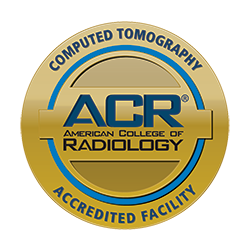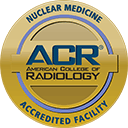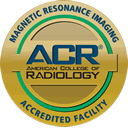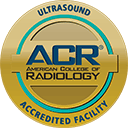Diagnostic medical imaging in Plantation, Florida
Plantation General Hospital's diagnostic imaging department offers a wide variety of advanced radiology and imaging procedures 24 hours a day, seven days a week. We offer inpatient imaging for patients staying with us in the hospital and outpatient imaging for scheduled imaging exams. Additionally, we are accredited by the American College of Radiology (ACR) and have vast experience providing imaging services to both adults and pediatric patients throughout Plantation, Florida.
To schedule an appointment with our hospital's imaging department, please call us at (877) 331-7032.
At Plantation General Hospital, patient safety is our top priority. Our entire staff is dedicated to reducing radiation exposure by following nationally accepted guidelines for administering the lowest, most effective doses of radiation.
Comprehensive imaging procedures
Our diagnostic imaging procedures produce advanced images of all areas of the body. We perform many specialized imaging procedures, so we can provide swift, accurate diagnoses. Our imaging services include:
- Computed tomography (CT) scanning—CT scans are a highly detailed form of imaging that
create cross-sectional images of structures in the body. This is accomplished by combining X-rays taken
from multiple angles through computer-aided technology to produce a single, detailed image. CT scanning
is ideal for capturing images of bones, blood vessels, ligaments, tendons, muscles and soft tissues in
the body. We commonly use CT scans to assist in:
- Diagnosing incoming patients with cerebrovascular accident (stroke)
- Performing image-guided biopsies
- Specialized heart imaging, such as angiography
- Viewing the sinuses, including the nasal cavity
- Imaging of the brain, chest, abdomen and pelvis
- Magnetic resonance imaging (MRI)—MRI scans use a magnetic field instead of radiation to produce images of the body. MRI is a useful tool in imaging organs, bones and soft tissues.
- Ultrasound—Ultrasound is a unique imaging technique in that it does not require the use of
radiation. Instead, it produces live images by capturing high-frequency sound waves. This technique is
ideal for your doctor to view the organs and is commonly used as a guide in procedures, such as
biopsies. Ultrasound is the preferred method of fetal imaging due to the lack of radiation. It is also
commonly used to examine the abdomen, pelvis and cardiovascular system. Different types of ultrasound
imaging include:
- Carotid ultrasound—This procedure produces images of the inside of the carotid arteries.
- Echocardiogram—This is a specialized ultrasound of the heart. It allows your doctor to view your heart's function.
- Transesophageal echocardiography (TEE)—This is an advanced echocardiogram that uses a transducer (a thin tube passed into the body) to gather highly detailed images of the heart's structure.
- Nuclear medicine—Nuclear medicine is imaging that is assisted through the ingestion or
administration of a radioactive "tracer" in the body. The tracer acts as a guide by highlighting the
area being imaged, which is picked up by imaging technology and creates an internal view of the affected
area. Sometimes, nuclear imaging may be combined with other techniques, such as CT scans. We offer the
following types of nuclear imaging:
- Stress tests—Stress tests use a radioactive tracer to view and evaluate how the heart is functioning, including blood flow in and out of the heart.
- Bone scans—Bone scans rely on a radioactive tracer to identify diseased, injured or infected areas of bone in the body.
- Multiple gated acquisition (MUGA) scans—MUGA scans use a radioactive tracer to evaluate the function of the lower two chambers of the heart, called ventricles.
- Interventional radiology— This specialty relies on image-guidance during a procedure and
can be a suitable substitute to traditional, open surgery. We perform the following interventional
radiology procedures:
- Uterine fibroid embolization—This procedure is aided by real-time X-ray technology, called fluoroscopy, to deliver a device that blocks off the arteries supplying blood to uterine fibroids, therefore causing them to shrink in size.
- Vertebroplasty—This procedure treats fractures in the vertebrae by injecting a cement-like mixture into the affected vertebrae. The injection is targeted and applied with the assistance of image guidance.
- Upper gastrointestinal (upper GI) series—An upper GI series uses X-ray imaging and a contrast agent, solution like barium that shows up white on an X-ray, to view the function and structures making up the gastrointestinal tract. This imaging exam may be used to diagnose functional problems or structural abnormalities.
- Intravenous pyelogram (IVP)—This is a type of X-ray examination that uses contrast material to create detailed images of the kidneys, ureters and bladder.
- Video swallow exam—This exam uses fluoroscopy to visualize a patient's ability to effectively swallow.
- Bone age—This procedure involves a simple X-ray of a child's hand, wrist and fingers that are compared to other X-rays of children of the same age and sex. This is helpful in identifying proper bone growth and maturity.
- Hysterosalpingogram—This examination looks specifically at the uterus and fallopian tubes using fluoroscopy. This procedure is aided by the use of a contrast agent.
Heart screening and imaging
Advanced imaging is a key component to our comprehensive cardiac care services. Providing an accurate, swift diagnosis is critical when intervening during a cardiac event and our cardiac experts work with our emergency room (ER) staff to ensure every patient receives the care they need.
We perform the following heart screening and imaging procedures:
- Electrocardiogram
- Stress testing
- Echocardiograms
- Contrast echocardiogram
- Stress echocardiogram
- Echocardiogram with Doppler ultrasound
- TEE
- Electrophysiology studies




